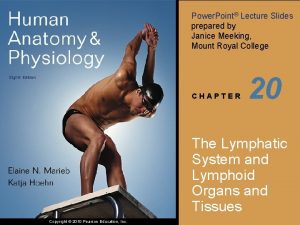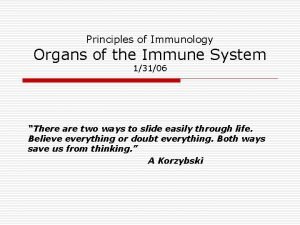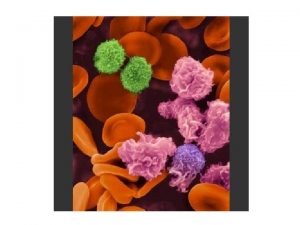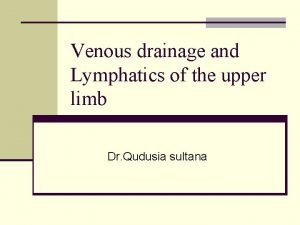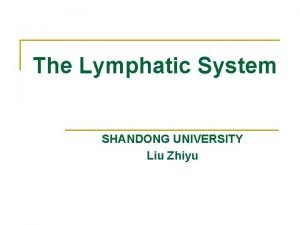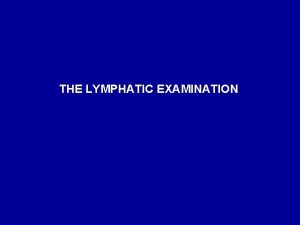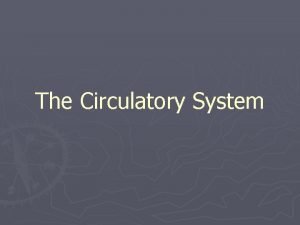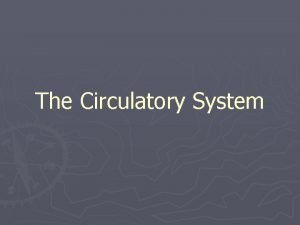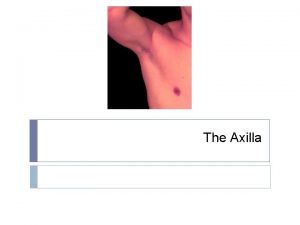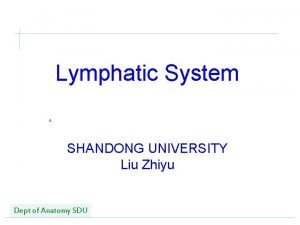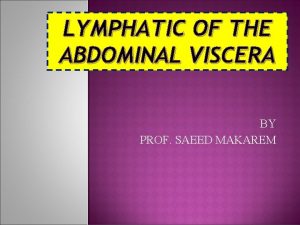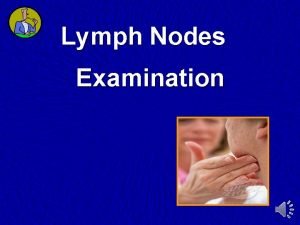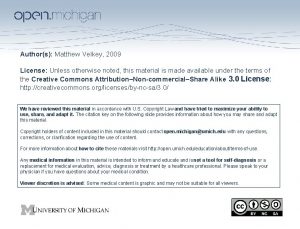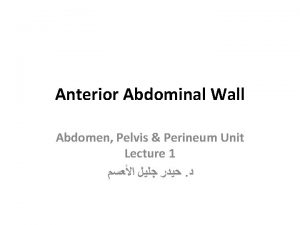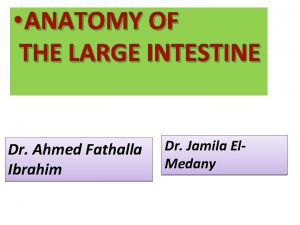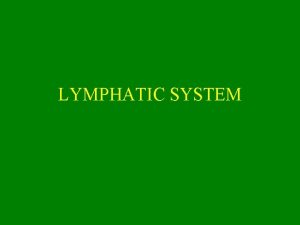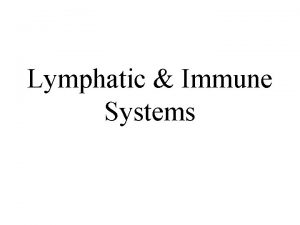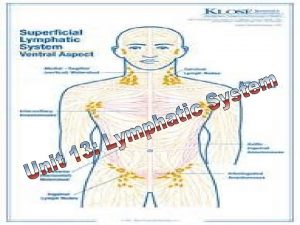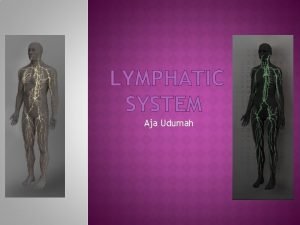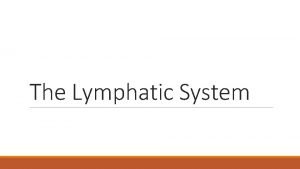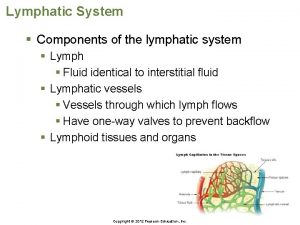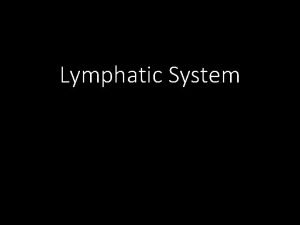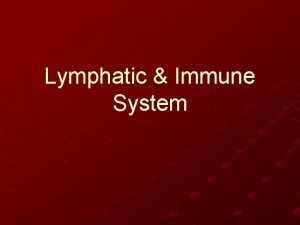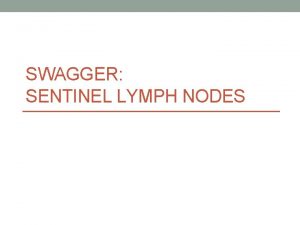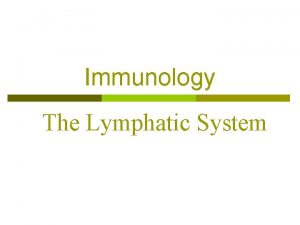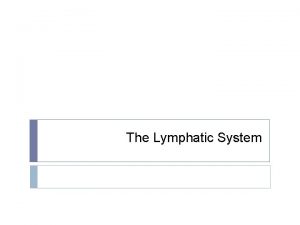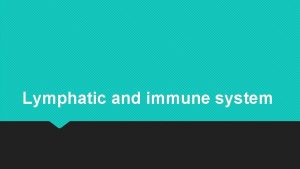Lymphatic System Lecture 2 Lymph nodes n Round


















- Slides: 18

Lymphatic System Lecture #2

Lymph nodes n Round bean-shaped structures found at certain points along lymphatic vessels n A fibrous capsule divided into nodules containing sinuses (open spaces) filled with macrophages and lymphocytes. n Two distinct regions: cortex & medulla n As lymph passes through the sinuses in the nodules it is cleansed of infectious organisms and debris

Lymph node

Function of Lymph Nodes n 1. 2. 2 basic functions Filtration – macrophages destroy microorganisms and debris Immune system activation – monitor for antigens and mount attack against them!

Thymus and its function Located in lower neck behind sternum, just above the heart n Bilobed organ that secretes 2 hormones: 1. Thymosin 2. Thymopoietin These cause certain lymphocytes to mature and become active in body defense n


Thymus cont’d n 1. 2. 3. Size and activity level vary with age: Largest and most active during childhood Stops growing during adolescence and slowly starts to shrink May disappear entirely in old age – replaced by fibrous fatty tissue

Spleen and its functions n Upper left abdominal cavity just beneath the diaphragm (fist-sized) n Similar structure to a lymph node: outer connective tissue divides it into sinuscontaining lobules BUT in the spleen sinuses are filled with blood NOT lymph – Blood reservoir if needed in times of low pressure or extra oxygen is required


Spleen and its functions cont’d n Spleen lobules contain red pulp and white pulp n Red pulp – rbc, lymphocytes and macrophages n White pulp – contains only lymphocytes and macrophages n Fxns: purify blood that passes through spleen

Spleen’s 2 main functions n Quality control of circulating rbc by removing old damaged ones – cleansed blood stored in red pulp n Helps fight infection – white pulp – primarily lymphocytes

Other spleen functions n Stores breakdown products of RBCs for later reuse – Spleen macrophages salvage and store iron for later use by bone marrow n Stores blood platelets

Remember This! n Spleen cleanses the blood n Lymph nodes cleanse the lymph n Together they keep circulating body fluids relatively free of damaged cells and microorganisms

Red Bone Marrow n Origin of all blood cells red & white – Present in skull, sternum, ribs clavicle, pelvis & spinal column & ends of femur & humerus n White bc function in immunity n 5 types – 13. 4 on page 255


Chief lymphatic cells & function n. T cells and B cells protect the body against antigens – T for thymus origin – B for bone origin (red marrow) n. T lymphocytes (T cells) mature in the thymus (along trachea atop heart) and are “tested” if they react against “self” they die, if they have potential to attack foreign cells they leave thymus

T cells cont’d n Responsible for cell-mediated immunity – Depends on actions of several types of T cells – Antibodies are not produced, instead they directly attack foreign cells that carry antigens – Other T cells release proteins to coordinate other actions of the immune response: T cells, B cells and macrophages – Protects against parasites, bacteria, fungi, cancerous cells – anything “foreign”

Chief lymphatic cells & function cont’d n. B lymphocytes (B cells) are responsible for antibody-mediated immunity – B cells produce antibodies – proteins that bind with and neutralize specific antigens n Growing within the bone marrow B cells develop unique surface receptors that allow them to recognize specific antigens – Protects against viruses, bacteria and foreign molecules soluble in blood and lymph
 Lymph tends to stall inside lymph nodes. this is due to
Lymph tends to stall inside lymph nodes. this is due to Lymph tends to stall inside lymph nodes
Lymph tends to stall inside lymph nodes Immune system lymph nodes
Immune system lymph nodes Lymphatic system outline
Lymphatic system outline Upper limb venous drainage
Upper limb venous drainage Lymphatics of the upper limb
Lymphatics of the upper limb Lymphatic drainage of lower limb
Lymphatic drainage of lower limb Plexo
Plexo Lymphatic drainage
Lymphatic drainage Delphian node
Delphian node Lymph nodes: “filters of the blood”
Lymph nodes: “filters of the blood” Lymph nodes: “filters of the blood”
Lymph nodes: “filters of the blood” Subscapular artery anastomosis
Subscapular artery anastomosis Jugulodigastric lymph node
Jugulodigastric lymph node Mesenteric lymph nodes
Mesenteric lymph nodes Epitrochlear lymphadenopathy
Epitrochlear lymphadenopathy Lymph nodes function
Lymph nodes function Campers vs scarpa's fascia
Campers vs scarpa's fascia Large intestine characteristics
Large intestine characteristics
